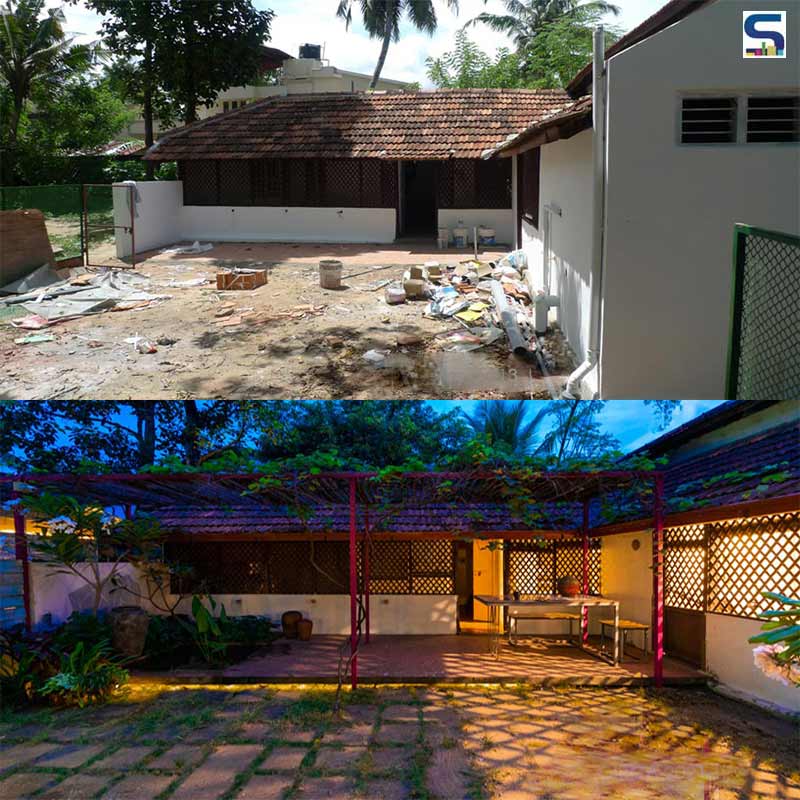
It does not matter when the concept of sustainable architecture began, but none would deny that today it is at the forefront of our collective minds, for both our business spaces and abodes. Building codes such as energy efficiency and carbon footprints have become tremendously popular and imperative in the architecture and design world. And, hence many architects and designers have become more conscious, innovative and thoughtful in all their designs.
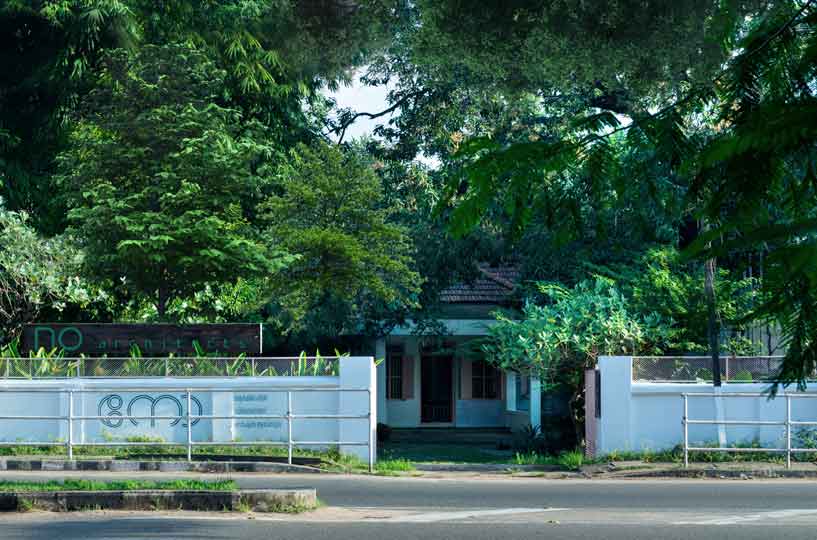 No Architects is one of those leading green architecture firms that have been consistently working towards creating buildings that appear to be part of their surroundings. Their latest project- Studio NO- is a decade-long experiment into sustainable landscape design; in the tropics, amidst climate change. The project locates on an urbanized site that had been used as an industrial dump yard, which the firm had meticulously and creatively restored and transformed into a sustainable and climate-resilient design studio. SURFACES REPORTER (SR) spoke with Neenu Elizabeth, Landscape Architect of NO Architects Designers and Social Artists on how this project is shaped. Read on:
No Architects is one of those leading green architecture firms that have been consistently working towards creating buildings that appear to be part of their surroundings. Their latest project- Studio NO- is a decade-long experiment into sustainable landscape design; in the tropics, amidst climate change. The project locates on an urbanized site that had been used as an industrial dump yard, which the firm had meticulously and creatively restored and transformed into a sustainable and climate-resilient design studio. SURFACES REPORTER (SR) spoke with Neenu Elizabeth, Landscape Architect of NO Architects Designers and Social Artists on how this project is shaped. Read on:
Also Read: The Yellow Street Depicts The Adaptive Reuse and Restoration of A Building | Calicut | Dot Architects
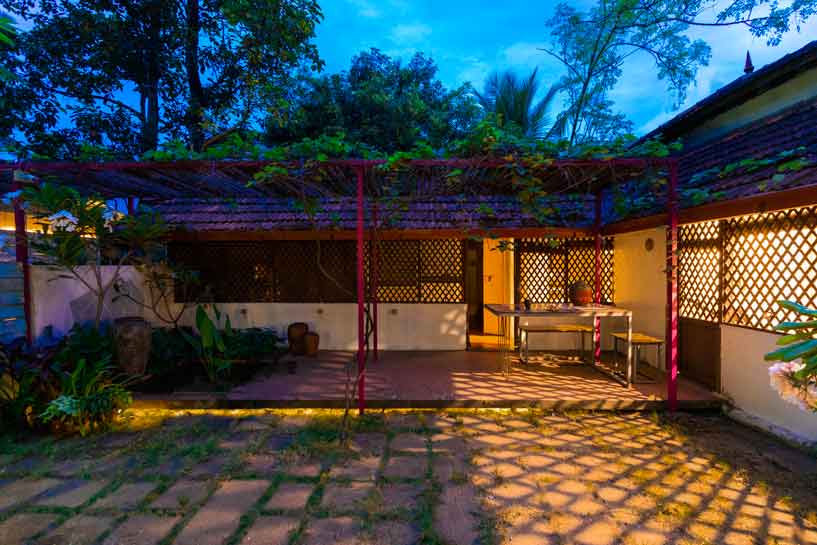 The firm started in 2011, by developing a dilapidated parcel of land in the heart of Kollam city, in the southern province of Kerala, India. "The site had an 80-year-old building, which was almost in ruins when we took up the project. The land had oil spills, due to storage of fuel from the adjoining gasoline retailer, construction waste piled up from previous alterations, and spillover from barrels of bitumen stored at the site for laying the abutting national highway.
The firm started in 2011, by developing a dilapidated parcel of land in the heart of Kollam city, in the southern province of Kerala, India. "The site had an 80-year-old building, which was almost in ruins when we took up the project. The land had oil spills, due to storage of fuel from the adjoining gasoline retailer, construction waste piled up from previous alterations, and spillover from barrels of bitumen stored at the site for laying the abutting national highway.
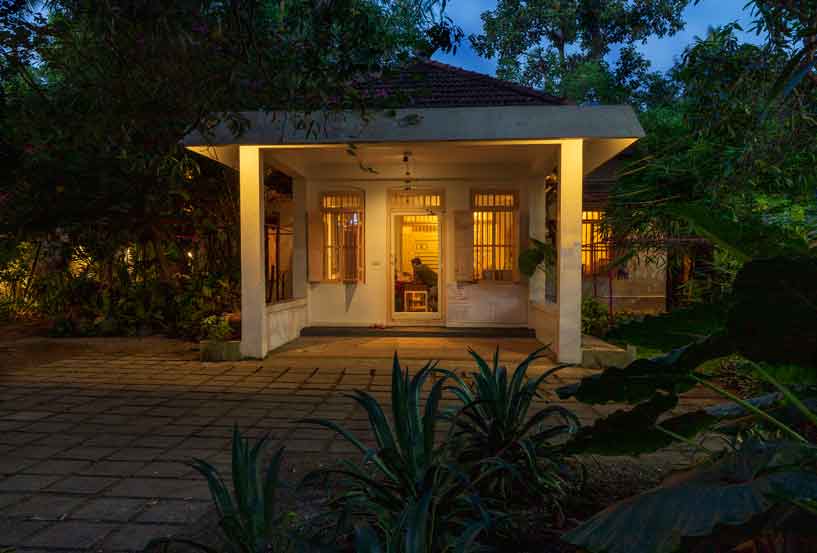 The first step was the rehabilitation of the land, removing the toxic substances and mitigating the ecological damage. Simultaneously the building was restored to its original architecture, and converted into a design studio," explains Neenu.
The first step was the rehabilitation of the land, removing the toxic substances and mitigating the ecological damage. Simultaneously the building was restored to its original architecture, and converted into a design studio," explains Neenu.
Adaptive Reuse
The remains of the existing building had undergone an intense restoration process to reinvent its original architecture. It was a careful intervention that removed haphazard developments from previous occupancies.
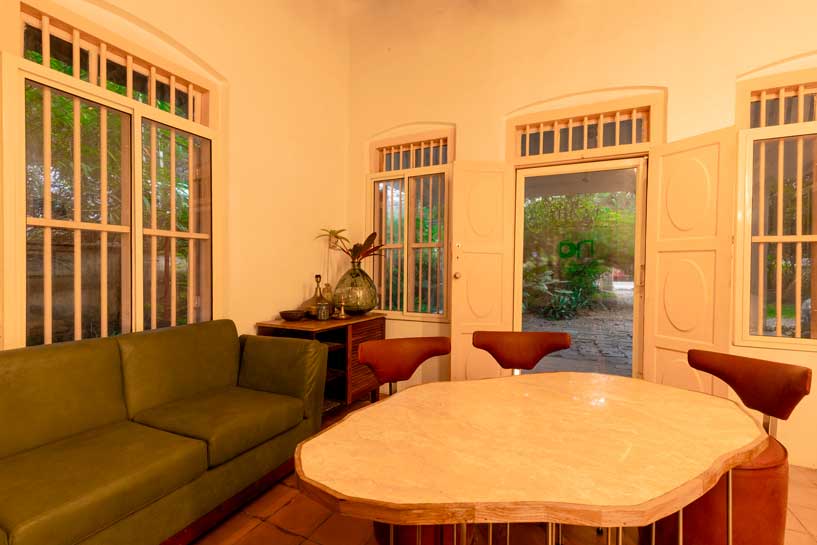 Wooden purlins, roof tiles, windows, doors and ceiling planks were collected from demolition yards and carefully repurposed for the project. Terracotta floor tiles were used to provide breathability to the old structure.
Wooden purlins, roof tiles, windows, doors and ceiling planks were collected from demolition yards and carefully repurposed for the project. Terracotta floor tiles were used to provide breathability to the old structure.
Planting Design
The next step was to create an ever-evolving landscape that could survive the torrential rains and the harsh sunlight of the tropics. The firm started by creating tropical lush greenery, following the works of Geoffrey Bawa.
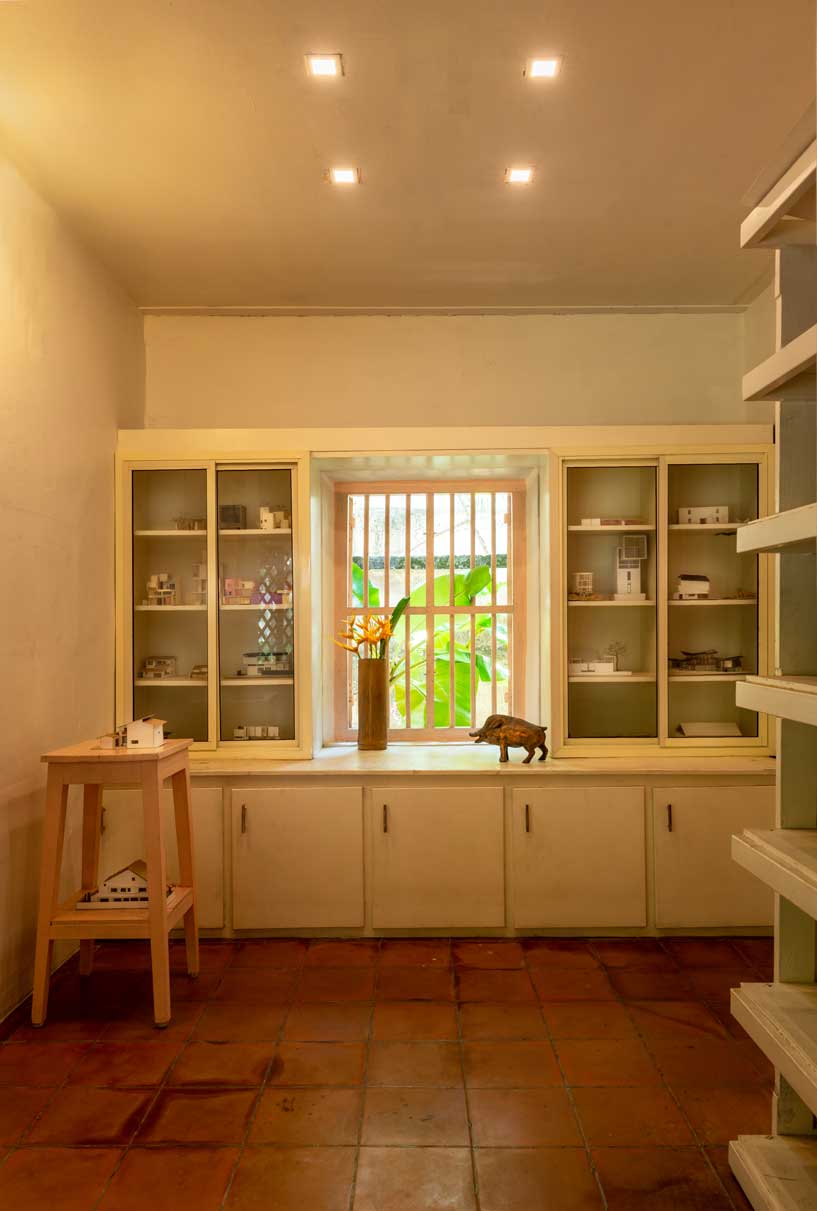 ‘The new wave’ planting movement by Piet Oudolf, which is a combination of wispy grasses and herbaceous perennials, defines the structure and form of the landscape beyond the use of colours, also guided our explorations. "We have created a perennial tropical garden with different compositions of plants that explore the contrast of forms and textures. This experiment also extended to the diversity of colours in foliage, and the addition of occasional blooms. It is a new interpretation of tropical landscape design " Neenu quotes.
‘The new wave’ planting movement by Piet Oudolf, which is a combination of wispy grasses and herbaceous perennials, defines the structure and form of the landscape beyond the use of colours, also guided our explorations. "We have created a perennial tropical garden with different compositions of plants that explore the contrast of forms and textures. This experiment also extended to the diversity of colours in foliage, and the addition of occasional blooms. It is a new interpretation of tropical landscape design " Neenu quotes.
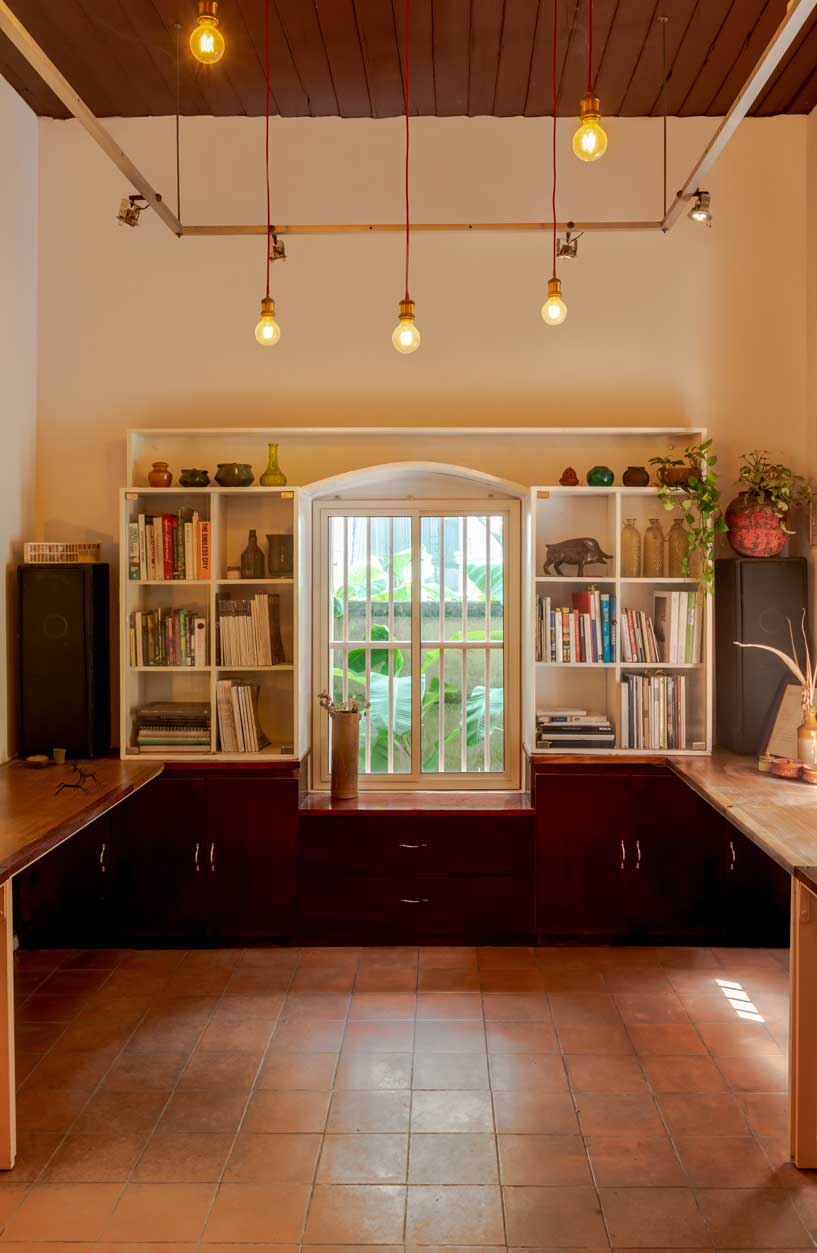
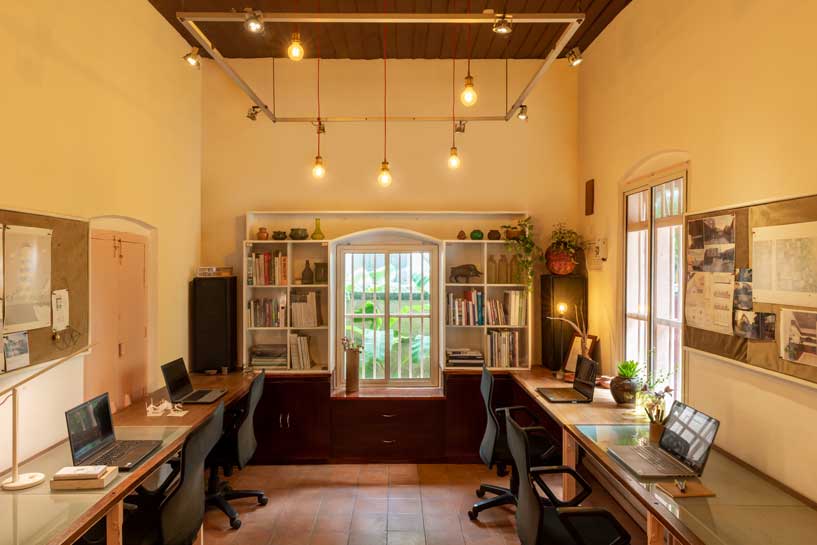 The site had two existing mango trees, which were conserved, while fast-growing trees and flowering shrubs were added. "We experimented with different combinations of groundcover to work on the marshy and sunlit areas of the land. Biodiversity was a core aspect of the landscape design, which made us think beyond the use of fail-safe species," she says.
The site had two existing mango trees, which were conserved, while fast-growing trees and flowering shrubs were added. "We experimented with different combinations of groundcover to work on the marshy and sunlit areas of the land. Biodiversity was a core aspect of the landscape design, which made us think beyond the use of fail-safe species," she says.
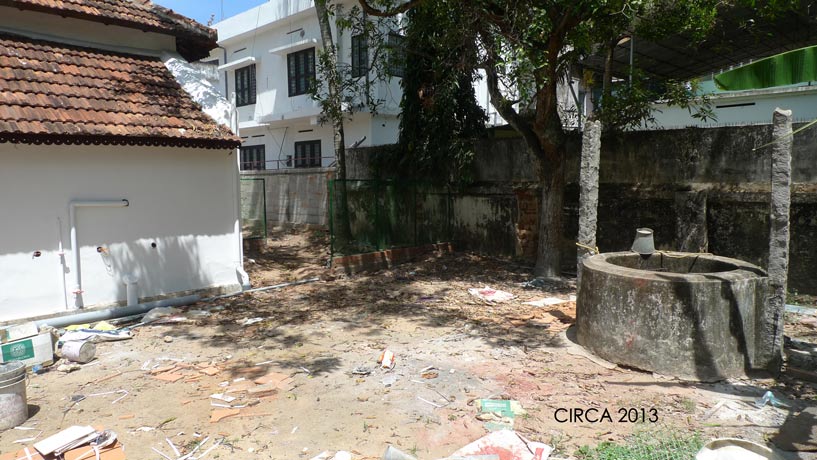
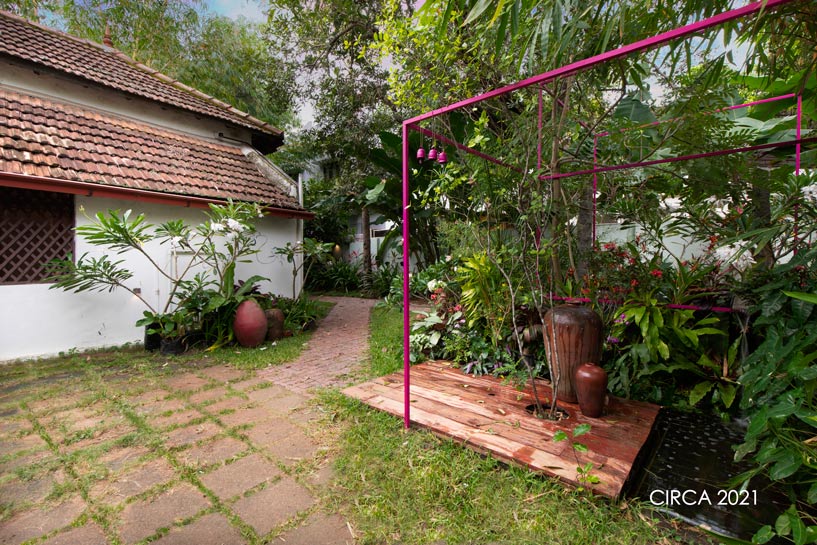 To use native plants alone was also not feasible, in this era of climate change. We used combinations of remarkable and long-lasting plants that are potential landscape materials, along with the native flora, which could thrive easily on the degraded land. It demanded years of research, with some spectacular failures in between, to reach somewhere near to the optimum planting that we see today," she adds.
To use native plants alone was also not feasible, in this era of climate change. We used combinations of remarkable and long-lasting plants that are potential landscape materials, along with the native flora, which could thrive easily on the degraded land. It demanded years of research, with some spectacular failures in between, to reach somewhere near to the optimum planting that we see today," she adds.
Also Read: This Creative Home By Skylab Architecture Features An Adaptive Reuse Of The Fused 1950s Warehouses | Portland | Oregon | USA
Ecosystems And Habitats
The research was also into the development of diverse ecosystems that create a refuge for butterflies, birds and small mammals, in the middle of the city.
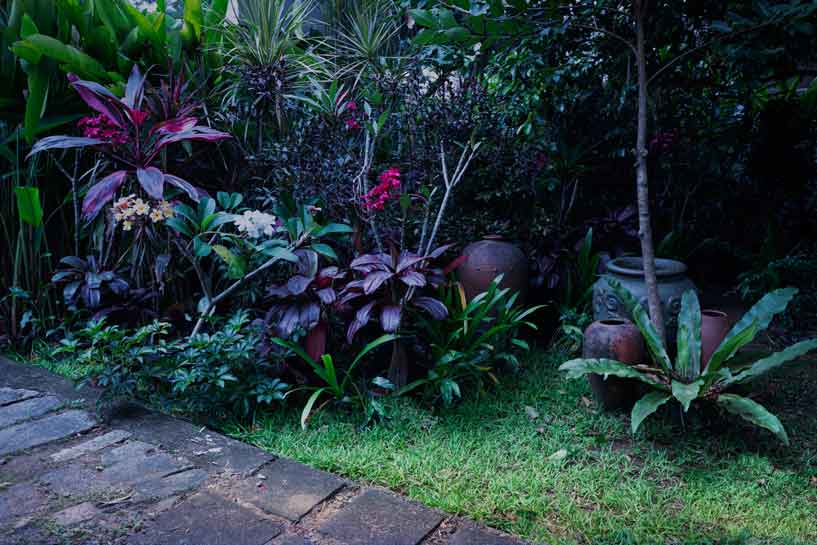
Living water bodies with clear water, where the fish and other aquatic fauna live in their natural habitat, without complex systems of filtration are also part of this experiment.
Usable Landscape
The design also aims to create a liveable landscape as part of the design studio, that can be used by the people, making it as relevant as the built spaces, from the user perspective.
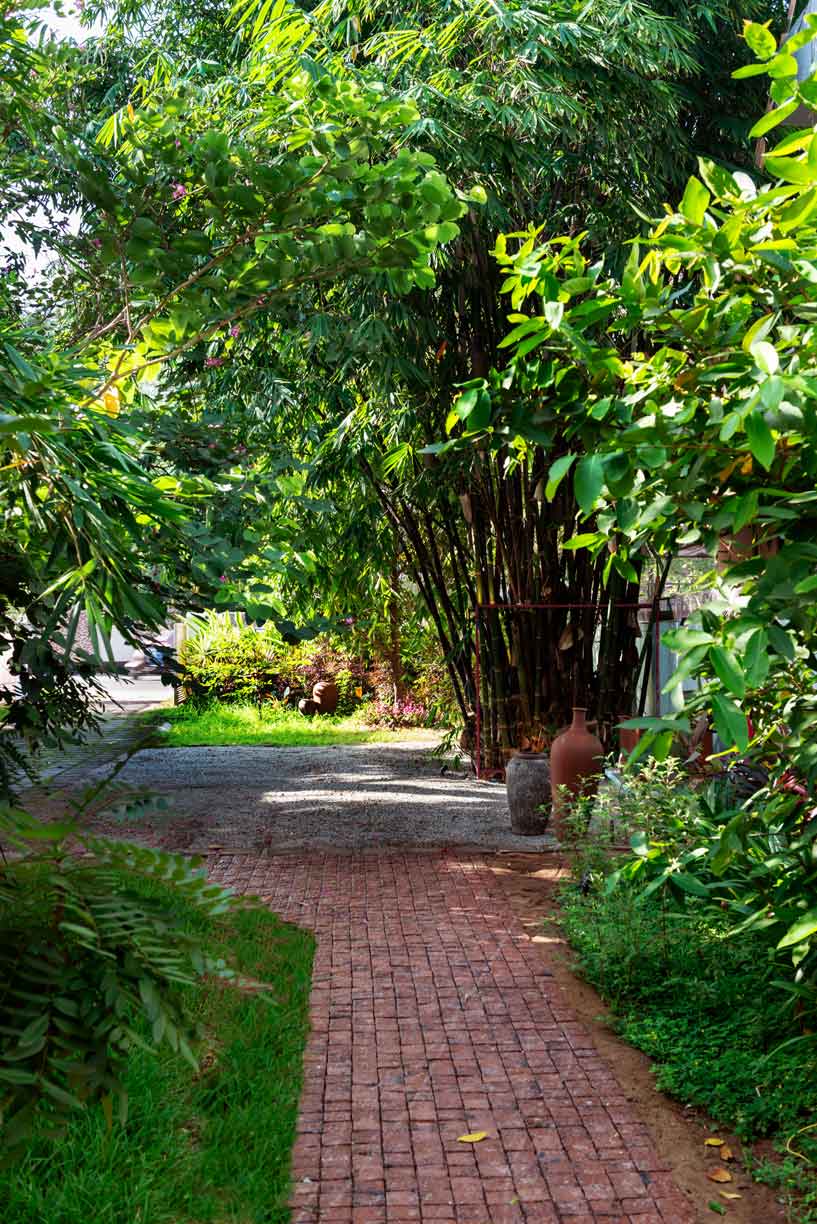 The outdoor dining area, the floating deck and carefully placed seaters along the connecting pathways add functionality to the green spaces. Carefully curated earthenware and Land art add human scale and subliminal aesthetics to the landscape.
The outdoor dining area, the floating deck and carefully placed seaters along the connecting pathways add functionality to the green spaces. Carefully curated earthenware and Land art add human scale and subliminal aesthetics to the landscape.
Also Read: Aann Space Designs A Lavish And Sustainable Mini-Resort Style Home in Chandigarh | Aann Haus
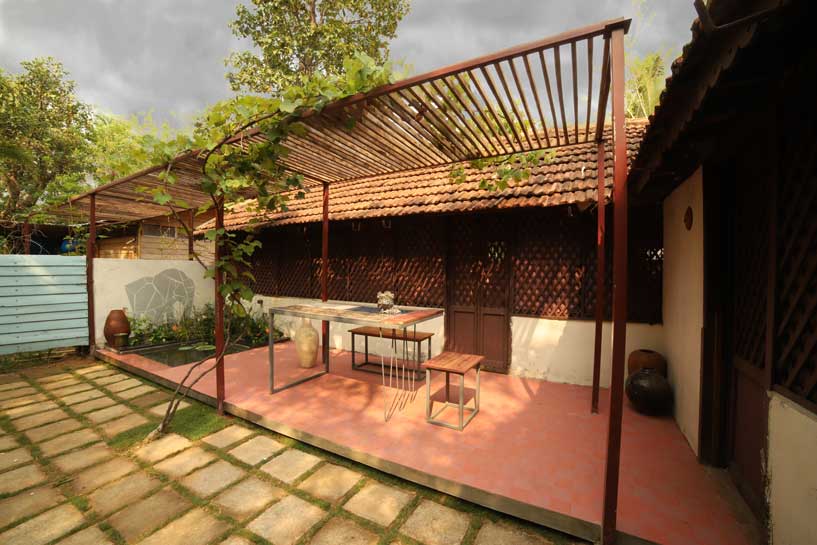
Impact Of The Floods
A sequence of devastating floods since 2018, as a consequence of global warming and degradation of the Western Ghats, has tested the resilience and adaptability of this plantscape.
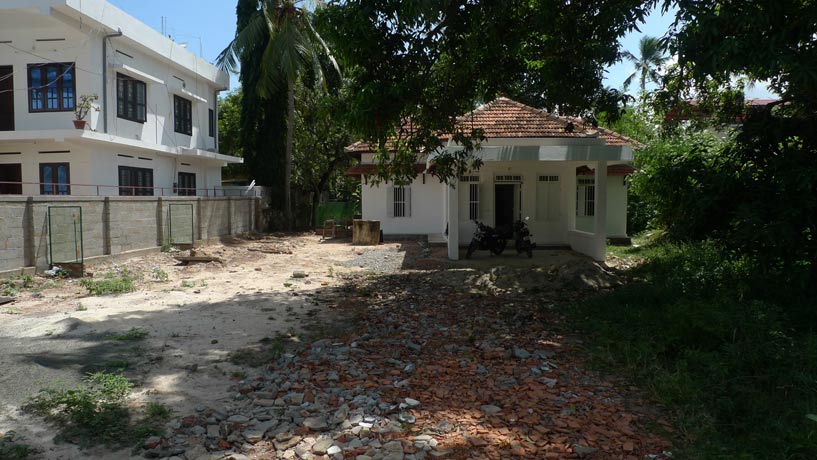 This landscape has even survived an oil spillage from the gasoline retail facility, during the floods, though it resulted in devastating consequences and a painstaking effort for its revival.
This landscape has even survived an oil spillage from the gasoline retail facility, during the floods, though it resulted in devastating consequences and a painstaking effort for its revival.
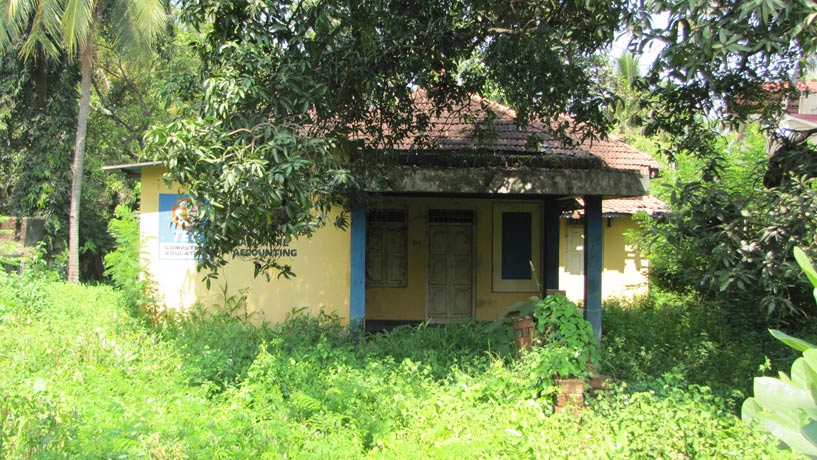 This resilient landscape stands as proof of the rejuvenating capacity of nature beyond the massive scale of human destruction.
This resilient landscape stands as proof of the rejuvenating capacity of nature beyond the massive scale of human destruction.
Project Details
Architecture Firm: NO Architects Designers and Social Artists.
Team: HarikrishnanSasidharan, Neenu Elizabeth, Akhil Gopi, Sameer Ali, Rose Antony, Ankur Bardhan, Robin Joseph, Akhila Menon, BabinBabu, Rajeev. R, Mahalakshmi.S, Anto Joseph, Mayuresh Muley, Jasmin Khatun, Sonali Nath, Jude Antony, AagamMundhava, Dravid.D
Landscape Architects: Neenu Elizabeth, NO Architects Designers and Social Artists
Photography: Lal. T.D, Redz Photography/HarikrishnanSasidharan
Structural Consultant: Abhilash Rajan
MEP Engineering: Varun Baby, Educe Engineering Consultants.
Contractor : Suresh Palayan.
Location: Kerala, India
Building Area: 119 SqM/1280SqFt
Landscape Area: 1014 SqM/10909SqFt
About the Firm
No Architects is a group of architects, designers and social artists applying an iterative, process-oriented design for addressing the challenges in architecture. It involves an intense research into the characters, characteristics, conditions, programmatic requirements, their interdependencies and relations to define the design challenge. The parameters of social context, economy and sustainability act as drivers in this process. The studio was founded in 2013 in Kollam, Kerala by Harikrishnan Sasidharan and Neenu Elizabeth.
No is a medium for social change.NO stands as an emphatic denial of stylistic pursuits and a commitment towards understanding and analysing the driving factors of society, its culture and life. This information drives their professional endeavours and they use this platform to project their visions for the future.

Harikrishnan Sasidharan, Architect and Urbanist, MSc, Delft University of Technology, Netherlands

Neenu Elizabeth, Landscape Architect, M.Arch (Landscape), School of Architecture and Planning, Chennai
Keep reading SURFACES REPORTER for more such articles and stories.
Join us in SOCIAL MEDIA to stay updated
SR FACEBOOK | SR LINKEDIN | SR INSTAGRAM | SR YOUTUBE
Further, Subscribe to our magazine | Sign Up for the FREE Surfaces Reporter Magazine Newsletter
Also, check out Surfaces Reporter’s encouraging, exciting and educational WEBINARS here.
You may also like to read about:
This Sustainable House in Vietnam Breathes Through 8 Revolving Wooden Doors on Its Facade | H House | AD9 architects
Worlds First Sustainable Floating City in South Korea | OCEANIX Busan
The Rammed Concrete And Copper Teahouse by Neri & Hu Restores Chinese Traditional Culture and Identity | Fuzhou
and more...